Most parents start thinking about the safety of the baby during pregnancy. Whether it is safety at home, or while traveling, your baby depends on you for her safety. As parents, we need whatever we can to make our baby’s environment as safe as possible. To know how to best secure your baby, you first need to understand the leading hazards.
Contents
Top Hazards
1. Trampolines
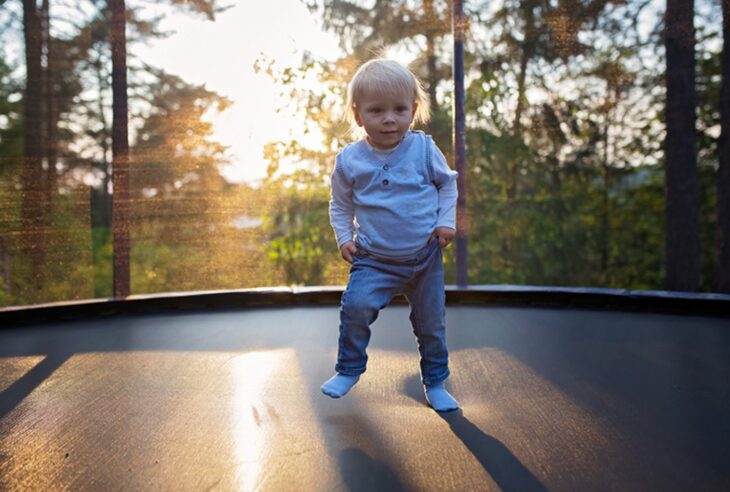
Source: Mother & Baby
Trampoline accidents are some of the common hazards that you should take seriously. Whether you want to purchase one for use at home or you plan to take your kid to a public park to play, you should know the basic tips to ensure your baby is safe.
Here are some stats. Between 2002 and 2011, over 1 million people ended up in emergency rooms in hospitals because of trampolines accidents. Most of those affected were children with a study revealing that 93% of fractures seen in children under the age of 16 are trampoline-related. Furthermore, 1 out of 200 of those accidents has resulted in permanent neurological damage.
Here are some safety tips you can rely on:
- Do not let your toddler below 6 years to use a trampoline.
- Allow only one child to use the trampoline per session.
- Use trampolines with enclosure, the nets that surround the trampoline. To get your best trampolines, use reliable reviews on safe trampolines and choose brands that have a proven safety record such as Skywalker. You can also read reliable reviews such as 10BabyGear’s list by Ashley Davis who is an expert in baby gear including safe trampolines available in the market
- Position the trampoline near the ground to reduce the impact in case of a fall
- Do not allow your child to bounce unsupervised
2. Water
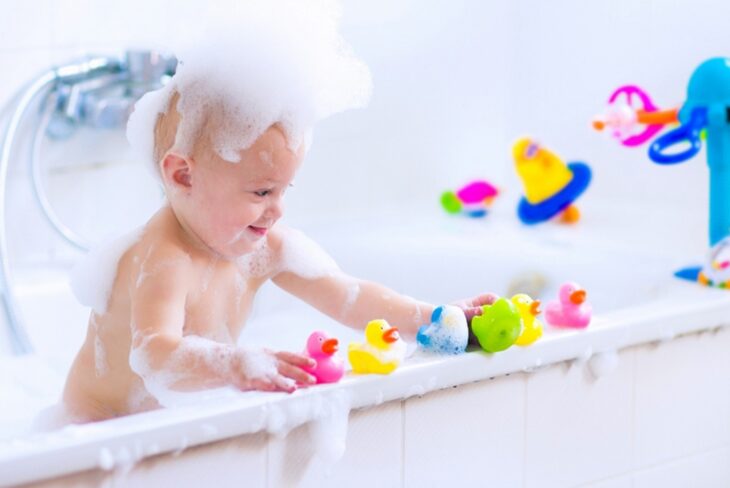
Source: Today Show
Yes, water is probably the most deadly hazard to children. Children can drown in even a small amount of water.
Many, many more children die each year from drowning in a family’s or friend’s swimming pool than in car crashes, even before car seats were invented!
- Always supervise children around water.
- Never leave a child alone in a bath, even for a moment.
- Have locking gates around any pools or other water.
- If you visit somewhere with a river, lake, or pool, make sure children are constantly
3. Car Seats – Crucial For Baby Safety
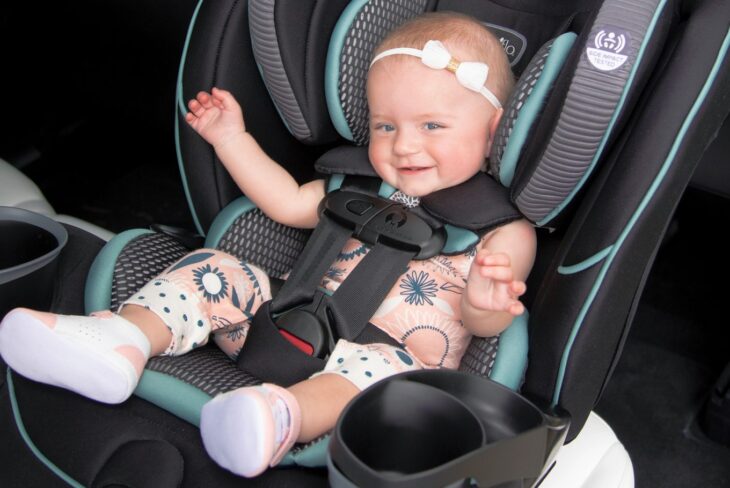
Source: Brif.rs
No car seat, no baby! That is the policy of many hospitals today. They won’t release your baby without showing them a proper car seat.
A car seat is a must if you plan to take your baby in an automobile. A properly installed car seat can protect your baby in most cases. Car seats are now given an expiration date, so a new car seat is your safest bet.
Car seats older than ten years or seats that have been in an accident may not be structurally sound. Also, after a few years of use, the car seat may become weak or brittle from the cold, heat, and sun.
Babies should ride in a rear-facing car seat until they are at least a year old or weigh 20 pounds.
One last word of caution: learn how to install it properly! Regardless of the type of car or the type of car seat, make sure you follow general tips such as:
- Install the car seat at the back of the car, it’s always safer for any kid below 13 years.
- Use either the safety belt of the LATCH to attach the seat securely to the vehicle.
- Use the one-inch test to find out if you’ve securely installed it. If properly installed, the car seat should not move even an inch.
- Always use the LATCH system if your child is below the age recommended by the seat manufacturer.
There are many different types of cars. You need to learn how to install the car seat correctly for each kind of belt, or else it may not save your baby when you need it most. For all kinds of baby safety gear, you can check out 10BabyGear.
4. Safe Bedding
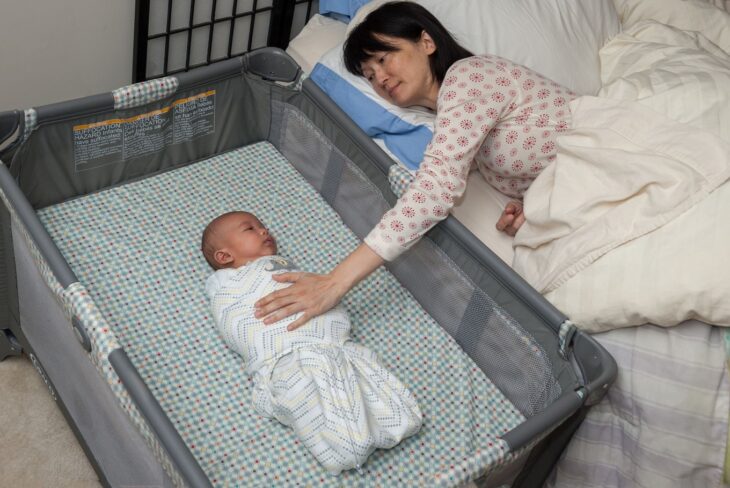
Source: Verywell Family
Include baby’s bedding when you consider baby safety. If you use a crib, be sure it meets the latest safety guidelines.
The slats should be no wider than 2-3/8 inches apart. This is to make sure your baby’s head can’t fit through. You can test this with a soda can or bottle. If it fits through the slats, they are too far apart.
The mattress should fit snugly into the crib, allowing no space between the mattress and the side rail. When the side rail is at its lowest setting, it should be at least 26 inches above the mattress.
Do not put all the cute padded decorations in the crib with the baby, and don’t keep it filled with toys and blankets. These are all suffocation hazards.
It is good to swaddle infants, but once a baby can get out of the blanket, and especially once they roll around a little, it is best for babies to sleep without a blanket, just warm pajamas. If it is too cold, a blanket sleeper (kind of like a sleeping bag) is safer than regular blankets.
Choosing Clothing
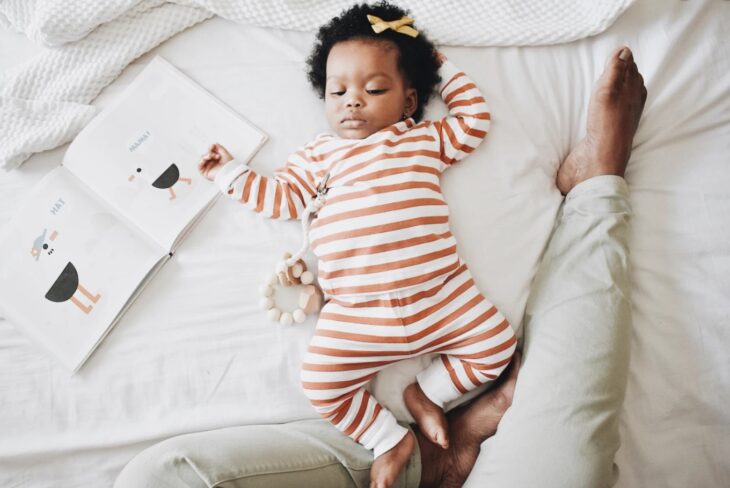
Source: Babylist
Baby safety for clothing includes:
- Fire retardant pajamas.
- No long strings or ties, especially for coats and hats, as these can get twisted around the neck.
- Well-fitting, so as not to restrict motion.
- You may also want to check labels or use organic clothes that have no irritating chemicals.
- Wash new clothes to remove surface chemicals that can irritate the baby’s skin.
Some More Tips On Baby Safety – Find Household Hazards
As your baby grows, you will need to baby proof the rest of the house. To secure baby safety I advise going around your house, perhaps on your hands and knees, and searching for hazards.
What to Look For
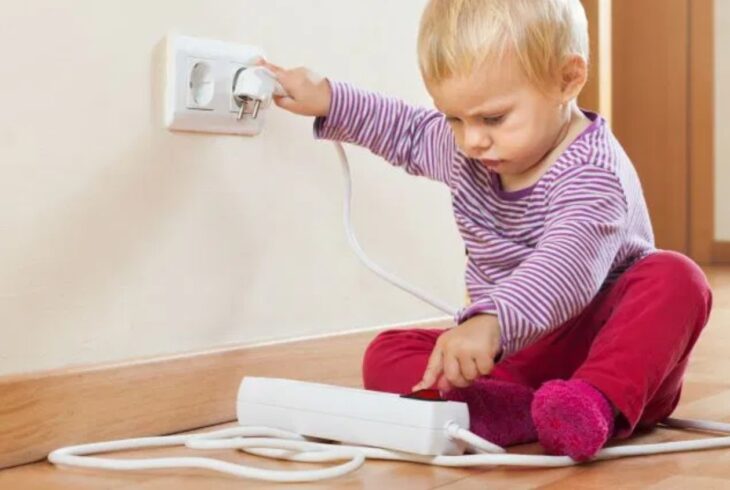
Source: Canada Eh?
Things to look out for anything:
- Sharp.
- Hard(bumps).
- Breakable, like glass.
- Swallow-able, anything small enough to swallow or choke on.
- Tipp-able, like floor lamps, or things that a baby can pull or knockdown.
- Tangle-able, any long ropes or strings can strangle a wandering baby.
- Poisonous, watch out, a baby finds something and in the mouth, it goes!
- That locks, make sure there are no doors, closets, cabinets, or chests that could trap a baby.
- Water, very dangerous for children. This includes toilets, buckets, tubs… anything wet!
- Electric, poses a risk of shock.
What to Do About Them
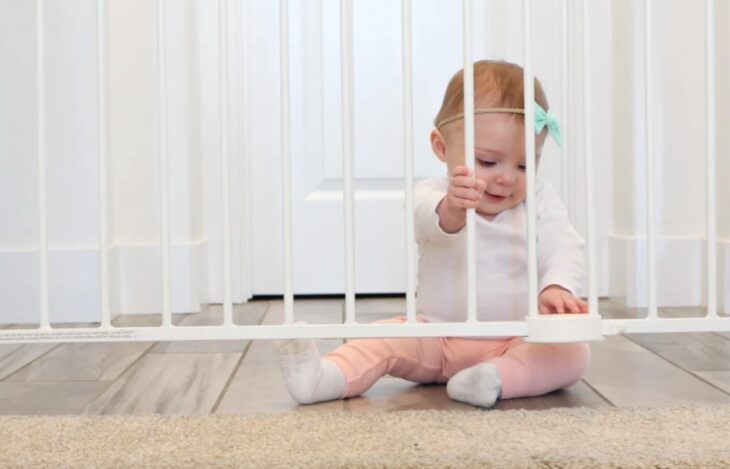
Source: Babylist
Here are some ways to protect babies from these hazards once you identify them:
- Baby gates can keep babies safe in one room, or keep her out of a room she should not enter.
- Corner guards go on coffee tables or hearths to protect your baby’s head should she lose her balance.
- Cupboard and drawer locks keep babies out of areas where dangerous products, like cleaners and medicines, may be kept.
- Safety covers for outlets and power strips will keep baby’s curious fingers from a dangerous jolt of electricity.
- Rugs or foam mats make play areas softer. This is especially important once your baby starts to walk, climb and fall.
Baby safety continues well into toddlerhood and preschool age. As the baby gets bigger, she can reach more dangerous items such as stove knobs or oven doors. Be sure that area rugs have non-skid backing so she doesn’t slip.
Know First Aid
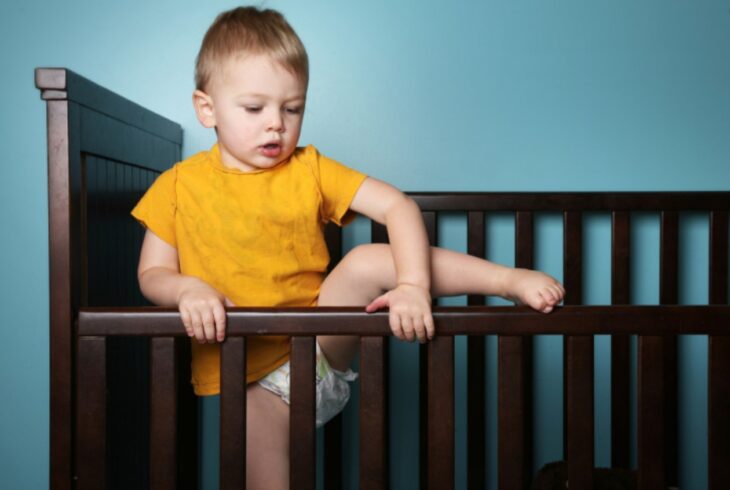
Source: www.mom365.com
Finally, all parents should know basic first aid. Inevitably, your little one will hurt herself in some manner.
- Keep a well-stocked first-aid kit on hand and know how to use the contents.
Learn about fevers… What temperature is safe and what makes it an emergency?
- Learn about cuts and burns.
- Know the warning signs of serious injury and illness, ask your doctor what to watch for.
- Make sure you have a list of emergency phone numbers on hand if you need them.
Preparing for baby’s safety is important. Make sure you do a thorough job to keep your little one safe and sound. You’ll feel more confident, and your child will remain safe.
